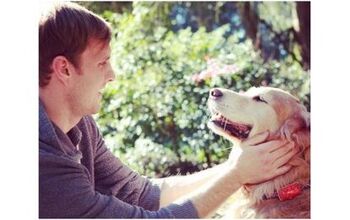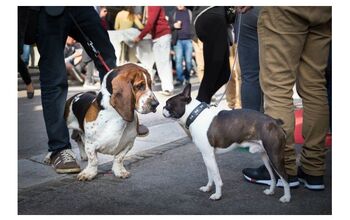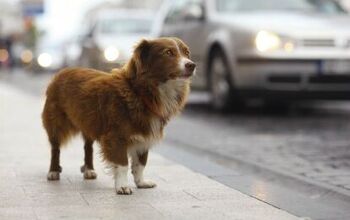4 Tips About What To Do When You Find A Lost Dog

From time to time, I’ll get a visit from a neighbor’s dog. Usually I know where the dog came from, and many of the dogs know what I mean when I command “Go home.” Otherwise, a quick phone call brings dog and owner together again.
But every once in awhile, the dog in my yard is truly lost. He may be very friendly, or not. There may be no collar, and I have no idea who he belongs to. If you’re ever in this predicament, here are 4 tips to reunite the dog with his owner:
1) Assume Someone is Looking for the Dog
Some people assume that a lost dog is either a stray or is running away from a neglectful or abusive owner. In reality, most dogs are neither but are dearly loved. Dogs wander away from home for a variety of reasons, and very likely, this dog’s owner is worried sick about him.
This dog may be friendly, or may be fearful. Don’t jump to any conclusions as temperament can be based on the breed or individual, or likely on the stress of being lost.
Related: What To Do If Your Dog Gets Lost
Even if the dog appears to be malnourished, injured, or matted, it’s more likely that it’s been missing for awhile rather than suffered at the hands of its owner.
So, unless you have definitive evidence that this dog was abandoned by his owner, don’t assume him to be homeless and take him in as your new pet.
2) Approach the Dog Carefully
Scared, stressed dogs may bite. This can be dangerous with an unknown vaccination record, let alone the immediate wound itself. For the same reason, keep your own pets separated from the lost dog.
Walk up to the dog slowly, speaking in a calm tone. Don’t try to sneak up on him; be in plain sight at all times. Offer a little bit of food to encourage him to come to you.
If you’re able to get ahold of his collar, or to otherwise capture the dog, check for identification. House the dog in a safe, secure location with shelter from the weather, clean water, and food. Contact the owner immediately if you find contact information.
Related: The Facts About Microchipping Your Dog
3) Take the Dog to the Vet
If the dog doesn’t have apparent identification, he may be microchipped. A local veterinarian can scan for it, as well as check the dog’s health.
Your veterinarian would also know the next best step if you are unable to foster the dog, such as contacting a local animal shelter. Opt for a no-kill shelter. Unfortunately some areas have laws that require contacting the local animal control, which may place the dog in a shelter that does euthanizations. If this is the case, ask to be able to foster the animal until the owner can be reached.
4) Search for the Missing Owner
Dogs can travel great distances if given enough time, so it’s important to look far and wide for the lost dog’s owner. You can start by putting up “found dog” flyers in the neighborhood and taking out a classified ad in the local newspaper. Contact local animal shelters and veterinarians who may have a list of missing pets.
Once you have a collar on the dog, you may try putting a long leash on him and commanding him to “go home.” He may just lead you to his home! Or, along the way, you may find someone familiar with the dog’s owner.
If someone does answer your “found dog” flyer or ad, and gives you a call, keep in mind that there are — unfortunately — dishonest people. Screen the callers by asking them to describe something about the dog that only the caller would know, such as a specific pattern of spots or that one ear is creased. Don’t ask leading questions like, “Does your dog have one blue eye and one brown eye?” but rather, “What color are your dog’s eyes?” If the caller doesn’t know the answers, she is likely someone just looking for a free dog.
If the caller does appear to be legitimate, agree to meet in a public place to give back the dog. For your safety, don’t invite the caller to your home and don’t agree to deliver the dog to the caller’s home.
At some point, your local animal shelter will recommend that the dog be adopted. If you are unable to adopt the dog yourself, it’s important to relinquish him to a no-kill shelter where he has the chance to become someone else’s dear pet.

Rita Brhel is a freelance writer with a huge heart for animals that she's passed on to her 3 children. Rita herself has a cat named Tippy (in photo) and 4 finches. Her 3 kids and husband share an additional 3 cats, 3 small parrots, 3 rabbits, 5 pigeons, 8 chickens, and 2 ducks on their acreage near Hastings, Nebraska, USA. She has experience with a lot of different species of pets of her own, has worked a 1-year stint in a vet clinic as part of a hands-on journalism project, and has been a foster pet parent for an animal shelter. Each of her children dream of careers working with animals, and Rita wholeheartedly supports them!
More by Rita Brhel























